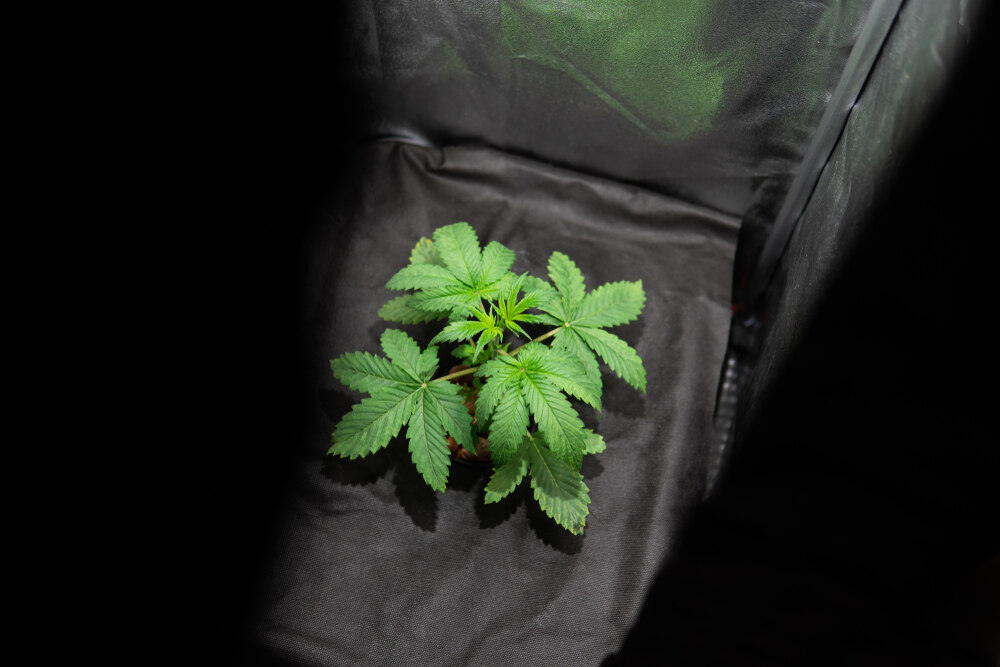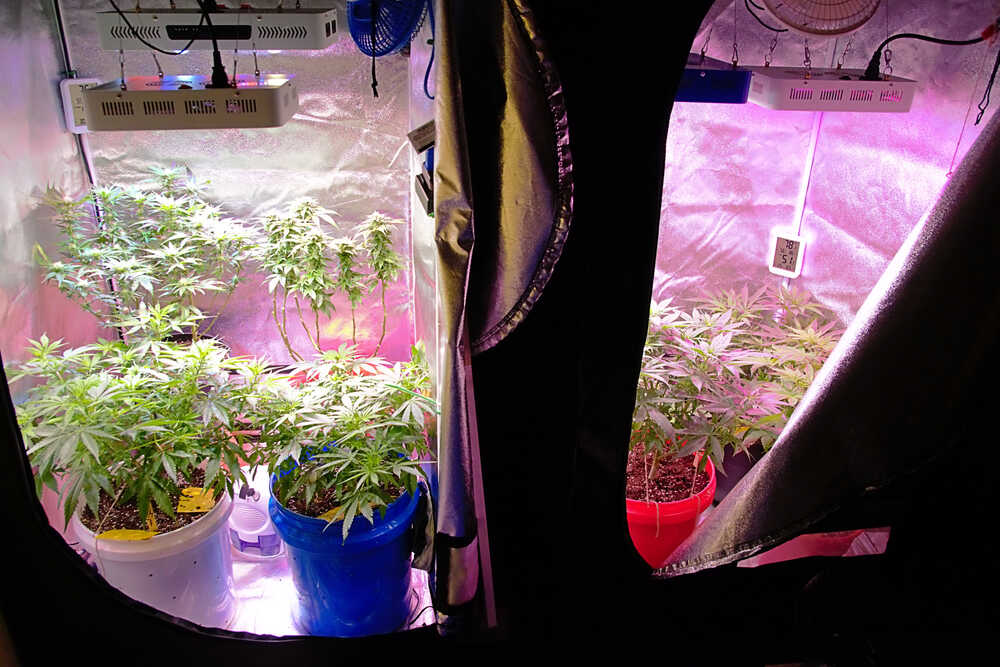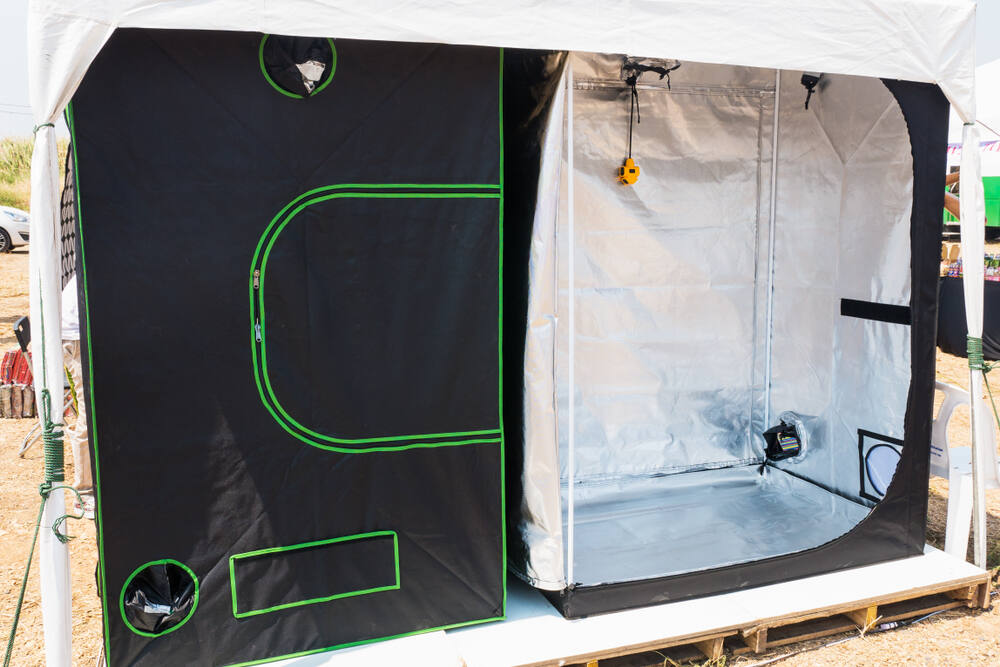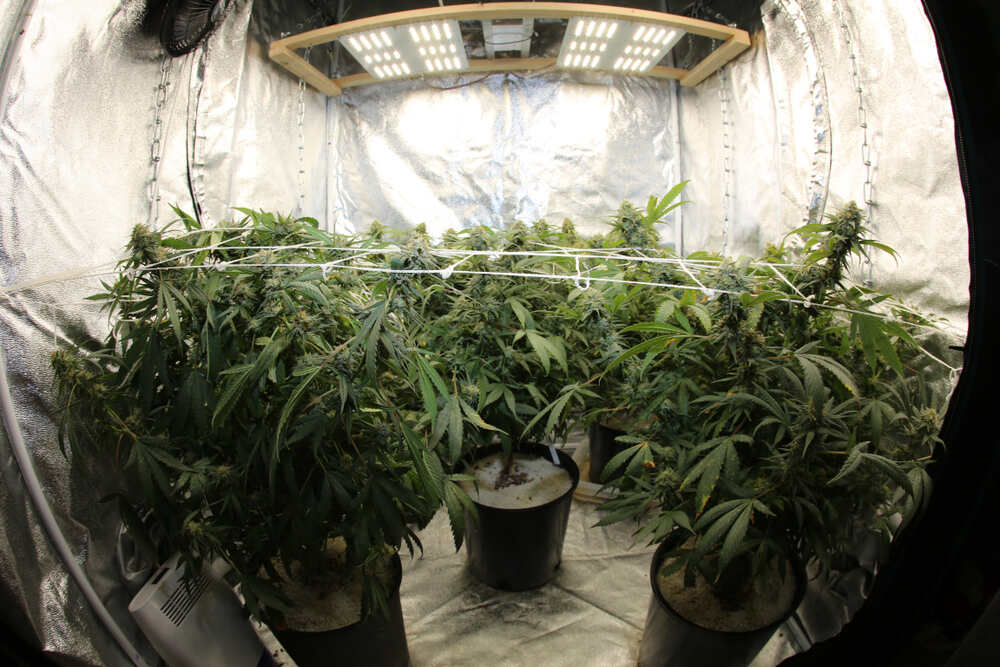
How many autoflowers can you fit in a tent
It’s human nature to want to amplify the potential of any given space, and that couldn’t be truer when it comes to growing weed indoors, particularly in a grow tent. They usually aren’t that big, and we all want the most for our money invested, and our effort expended.
Us weed growers can be a little, let’s say, overzealous at times – especially those just starting down the road to your very first harvest. The more plants that you can find under one light, in one tent, the more buds you will have in the long run, right?
Nope, not necessarily…
There is definitely a limit to the number of plants you should try to squeeze into your grow tent, and while autoflowers may be a little smaller than your everyday photoperiod cultivar, they still need enough space to grow, then thrive, and finally maximize…
Factors that affect the number of autoflowers in a tent

Tent size and dimensions
The most obvious factor that you need to consider when working out the best number of autos to fit into one tent is the size of the tent itself. The bigger the tent, the more plants you can fit inside – simple as that.
But it’s not just about square footage – the dimensions of your tent also play a crucial role. A tall and narrow tent may seem like a good idea when growing lanky sativa dominant strains, but short, squat indica options that like to grow more outward need some width for their branches to spread out. In fact, for the most part anyway, we want to try and train our plants to grow more outwardly than vertically, so all the bud sites have an equal share of the light penetration.
So, before you do anything else, make sure you know the exact size and shape of your tent so that you can plan accordingly.
Autoflower strain and growth characteristics
Not all autos are created equal – some strains grow tall, while others stay short and compact. Some have a bushy structure, while others have decent internodal length. It’s important to research the specific strain you plan on growing to get an idea of its growth traits.
Additionally, some autoflowering varieties may do just fine in small spaces or crowded conditions, while others may need more room to reach their full potential. We include all the info you need for each and every strain we offer here at Auto seeds, so make sure you check that all out before making any decisions.
Pot size and plant training techniques
The size of your pots and how you intend to train your plants (if at all) makes a surprisingly large difference to the number of autos you might be able to squeeze into your grow tent. The larger the pot, the larger the footprint, and also the bigger they may potentially grow – all of which will limit the number of plants you can fit in.
The same goes for training techniques – some will help squeeze more in, whereas others can actually reduce the number of plants you will be able to grow in one space.
Lighting setup and its influence on plant arrangement
Not all lights are created equally, and the type of lighting setup you have can make a big difference to how many autoflowers you should fit in your tent. LED panels have quickly become the go-to choice for most indoor growers, and although they may be more efficient than HID options, they struggle to push out the same intensity of light, so you may need more of them to cover the same area.
The limitations of autos
Now, we all love autoflowers – they bring so much to the table and make cannabis cultivation more accessible and easier than ever before – but they have one pretty obvious limitation.
Autoflowers’ growth cycle is fixed and can’t be manipulated like photoperiod plants. There is a set period of time that the plants will be in the vegetative growth period, and although some autos may flower early if you switch the lights to 12/12, there are many that will just keep on trucking in veg regardless.
A bunch of the smaller auto cultivars will work great for a Sea of Green setup, but others that are a little larger will fill a small tent up quicker than expected, leaving you scrambling to defoliate, tie down, and make room for the girls.
The bottom line
All of the above leads to the simple fact that knowledge is power when it comes to getting the most out of your grow tent. A lot depends on the specifics of your setup, so it’s crucial to understand the cultivar/s you are working with and how best to maximize their potential.
Ultimately, there is no magic number when it comes to the number of autoflowers you can fit in a tent – it varies from strain to strain and grower to grower. That said, next up, I am going to go over the general guidelines for plant numbers in different tent sizes. These are more of a starting point than definitive rules, so use them as a reference and tweak accordingly.
How many autoflowers can you fit in different tent sizes?

Best number of plants for a 2×2 tent
Ok, so in the baby tents, you are obviously going to want to keep plant numbers relatively low. For the average auto cultivar, no more than three plants in such a small space is best, although two may actually result in a larger yield – strain and training technique dependent.
One of the bigger auto strains can easily fill out a 2×2 or even 2×4 at times, but I recommend starting with two if this is your first grow. Keep the scissors in hand, because defoliation is going to be the name of the game as your plants explode into flower.
Ideal plant count for a 3×3 tent
In a 3×3 tent, you can begin to play around with plant numbers a little more. Depending on the strain and pot size, as well as what sort of plant training you are planning on carrying out, three to six autos should be doable. As always, yield will vary depending on a bunch of factors.
Again, new growers should look to plant fewer than more. Experienced cultivators may want to push the envelope a little, especially if you have a decent understanding of the growth patterns of the strain you are working with.
How many autoflowers for a 4×4 tent
In theory, 4×4 tents can fit sixteen smaller autos, but I don’t recommend it.
When I first started growing about 15 years ago, this was my starting tent. It’s a great tent size – super versatile, easy to manage, and just big enough for a few plants to keep you flush with a surprisingly decent amount of bud. But again, less is sometimes more.
After trying eight plants for my first grow and then six for the next, I settled on four or five as the magic number. It’s a good balance between maximizing space and not overcrowding.
Maximum autoflowers for a 5×5 tent
Now, the jump in volume between 4×4 and 5×5 tents is pretty big. We are going from a sixteen square-foot space to a whopping twenty-five, so it should go without saying that you can cram a lot more plants in here.
I have seen some growers get twenty small autos in a 5×5, but it’s risky. Things can get crazy crowded, and apart from giving the plants the room they need, it can quickly become almost unmanageable. Personally, I like to have about eight to ten plants in a 5×5 tent – this number leaves enough space for you to still get in and do what you need to when it comes to maintenance, training, and harvesting.
Maximizing space efficiency in a tent

Techniques for pruning and training autoflowers
In the last five years or so, we have seen auto genetics take a giant leap forward. I used to be of the thinking that topping autos was simply too high risk, but now we have a bunch of cultivars that really love a bit of heavy-handed tough love. I now top all my autos, and the results speak for themselves.
Is topping pruning?
Yes, but pruning isn’t always topping.
Defoliating is probably the better word—that is, keeping those fan leaves in check to ensure your plants are making the most of their limited space.
Trimming off a few leaves here and there throughout the growth cycle is going to help open your plant up, getting light and airflow into some of those hard-to-reach areas. The fan leaves are your solar panels, so don’t go overboard, but it’s worth trimming off any that look like they are blocking out light, or on their way out.
You can also look to remove any of the lower branches that are not getting enough light. If you are growing in a super tight space, they likely won’t be producing much anyway and suck energy from the plant. But doing so can impact growth for at least a few days, so be careful and do it sparingly.
Low-stress training (LST) and its impact on plant count
LST is the process of tying down branches to expose the lower parts of the plant and facilitate more efficient light penetration. This technique is particularly useful for autoflowers, as it allows you to spread out the plant’s growth horizontally rather than vertically, allowing for an even canopy with more bud sites getting better light cover.
But when the entire canopy from multiple plants is at one, uniform level, overcrowding can quickly become a problem, especially when flowering really kicks off. Make sure you plan accordingly, or you can easily end up with a tangled mess.
Using scrog nets and other space-saving method
I love Scrogging, and I think that all new growers should be looking to implement a screen or net – they’re easy to set up, especially in a tent, and can make a huge difference in terms of canopy management and yield. Most decent tents come with a scrog net that covers the entire footprint. If not, head to your local hardware supplier and pick one up for a few bucks.
The idea is that as the branches reach the net height, you secure them in place and start to train them out horizontally (if needed). This is, by far, the easiest way to make sure your entire canopy (and bud sites) is getting an even spread of light and is works great whether you have topped your plants or not.
Common mistakes when packing autoflowers into a tent
Overcrowding and its effect on growth and yield
The number one mistake growers make. Don’t do it, you’ll end up regretting it, and too many plants will result in a lower final yield.
Failing to account for plant height and stretch
Plants can close to double in height during the ‘stretch’ (the first ten or days of flower), and unless you have a scrog net in place to help you keep things in order, the resulting mess can kill your yield. Keep that in mind when planning out plant numbers.
Ignoring ventilation and humidity control
Small tents with big lights can get hot and humid fast. Don’t underestimate how much airflow and ventilation is needed to keep your plants happy and healthy. Always have a decent extraction fan (an inline works best), and a few small oscillating fans to keep air moving around the plants and prevent any hot spots.
Not planning for maintenance and harvesting
As mentioned earlier, make sure you leave yourself enough room to comfortably tend to your plants, especially if you have one of the larger options.
Poor lighting distribution
I have talked about this a lot, but it’s worth mentioning again – light spread and penetration is crucial for maximizing yield. Even if you are only growing a few plants, make sure your lighting setup allows for even coverage across the entire canopy. This may mean investing in supplemental lighting or adjusting the height and placement of your main light.
Autoflower tent capacity FAQs
How many autoflowers can fit in a 2×2 tent?
One or two is best. You can probably fit three, but it will be a tight squeeze and can impact growth.
How many plants can you grow in a 4×4 grow tent?
I experimented with more but settled on four or five being the best number for me.
What is the best pot size for autoflowers in a tent?
Start and finish your autos in a 10-to-15-litre pot. No transplanting, it can stunt growth, and ain’t nobody got time for that.
Can you grow autoflowers in small pots in a tent?
Sure, but you will be compromising on yield potential. I personally wouldn’t go below a 5-litre pot for autos.
What is the best light setup for growing autoflowers in a tent?
The newer generation LED options (don’t skimp and get a cheap eBay or Amazon panel) are perfect for a tent growing setup. The best light will be dependent on your tent size.
- 2×2 – around 100 watts will work
- 4×4 – look for a 350-watt option
- 5×5 – 500 watts minimum, maybe multiple panels to spread the light across the entire canopy
